Cannabis in Montana
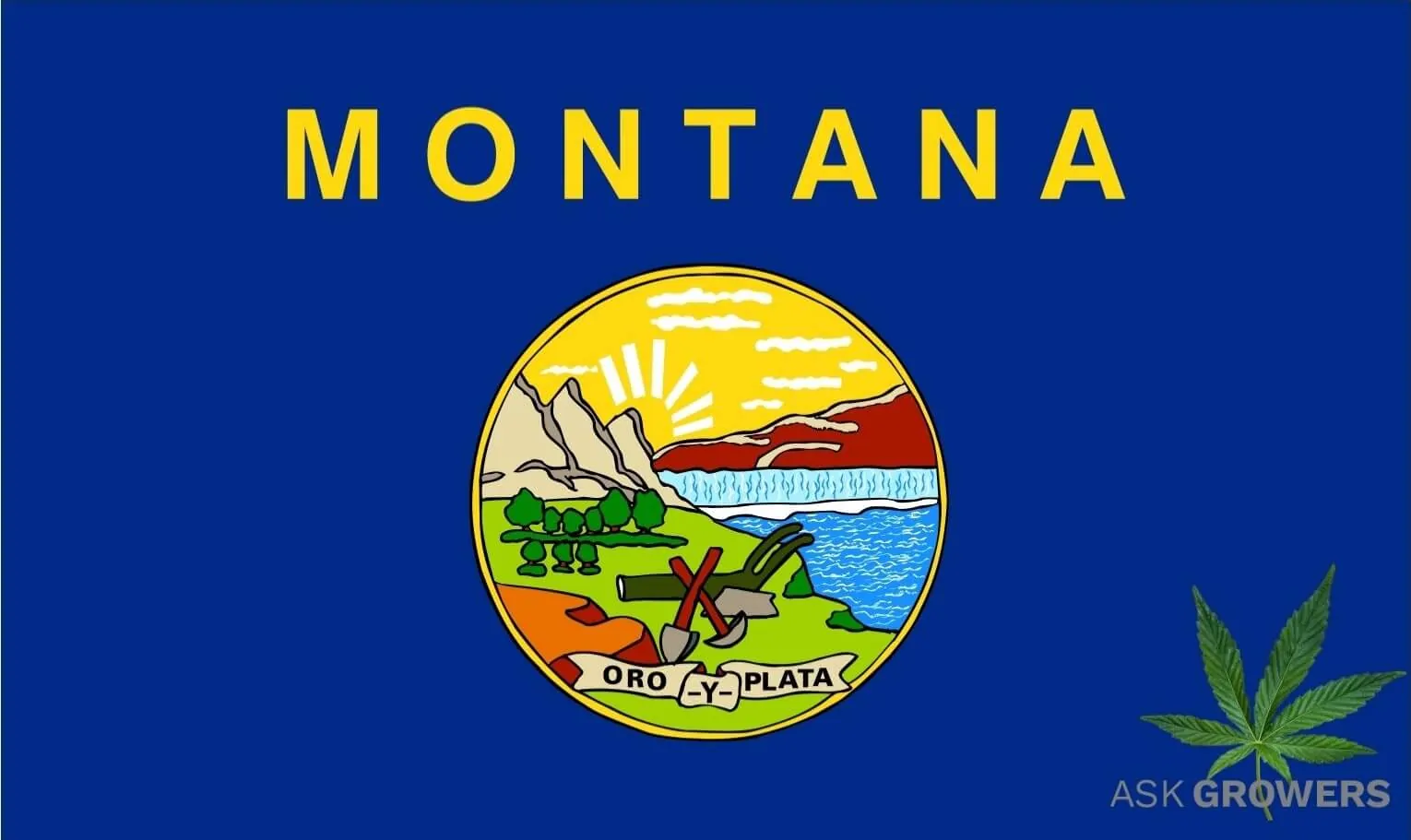
Montana has joined a growing number of U.S. states that share a common-sense approach to cannabis. The recent Montana weed laws have made recreational hemp legal and expanded access to medical cannabis.
If you are heading for the northwest and have missed Montana pot law changes, read about your limitations and rights to stay secure in the state. Explore new hemp culture in Montana in this post.
Is Weed Legal in Montana?
What year did Montana become a state that legalized hemp? In 2004, medical marijuana (MMJ) became legal with the approval of the Montana Medical Marijuana Act, and in 2011, the list of approved medical conditions was extended. Whatever the changes, the MMJ program had numerous restrictions that prevented patients from getting enough marijuana (MJ) for treatment. Medical retailers were rare, caregivers could service only 3 patients, and doctors who recommended more than 25 patients were placed under high scrutiny.
Due to the passed initiative, the MMJ program was greatly improved in 2016. It removed some restrictions and permitted providers to serve more than 3 patients.
Until November 2020, recreational cannabis was illegal within the state since 1929. Thanks to the passage of Initiative 190, it is now legalized. The law will partially come into effect in January 2021. Adults of 21 and over will be able to consume hash. The Department of Revenue has a year period till the deadline to establish all regulations and rules, and till they come to the full extent of their power.
Before legalization, the penalties for weed in Montana were one of the toughest in the nation and resulted in imprisonment and steep fines even for possession in small quantities. The possession of 60 g as a first offense was treated as a misdemeanor that attracted serious penalties (6 months’ jail time + $500). If you were caught with more than 60 g, it was considered a felony (5 years’ jail time + $50,000). The weed possession with intent to distribute was punished with 20 years in prison. After the state has made pot legal, individuals who are servicing a sentence in regard to cannabis can apply for resentencing.
Buying Marijuana in Montana?
The new weed law is expected to allow legal adults of 21 to buy 1 oz. of cannabis or 8 grams of concentrated products to match the possession limit (individuals will be allowed to carry the same amount outside their residences). To buy pot, they should provide their valid photo ID card.
Qualified patients 18 and older can possess and consume pot if they have debilitating medical conditions. Before 2016, they were limited to buy 1 oz. of medical hash or its concentrated equivalent. After the law liberalization, they can purchase 5 oz. of cannabis but as a monthly supply with a purchase limit of not more than 1 oz. a day. In some cases, monthly purchase limits can be increased. Buying hemp in dispensaries is simple, just bring your ID and an MMJ card. Caregivers are also allowed to buy cannabis on behalf of their patients.
Cities have the right to regulate the operating hours of dispensaries, so they can vary. Usually, they are open from 10 a.m. to 7 p.m. The new regulation allows counties to prohibit pharmacies with recreational sales through a public vote.
The delivery service of any kind of weed is prohibited.
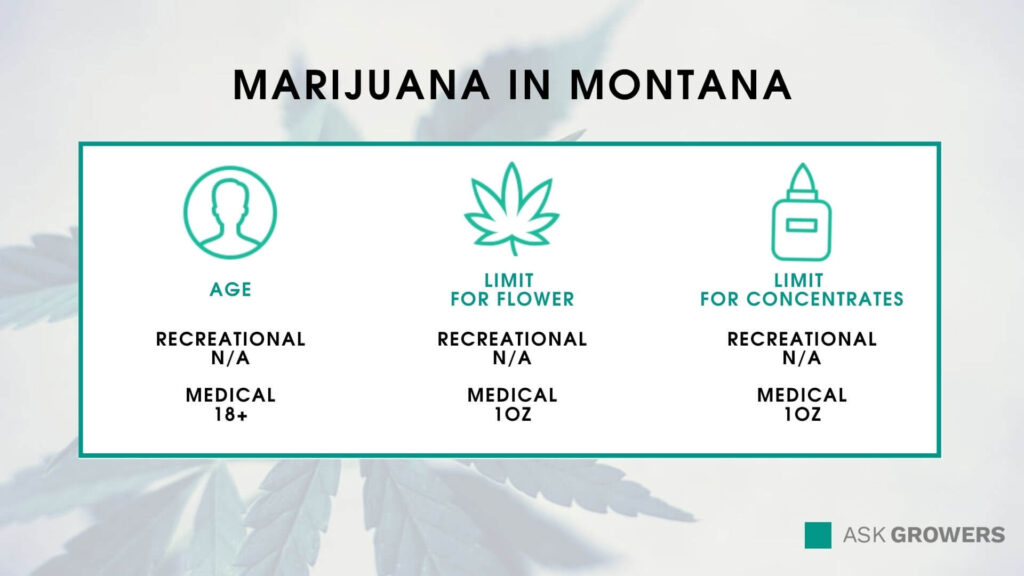
Cannabis Consumption in Montana
There are no businesses in Montana that allow weed use. Until recreational pot laws come out, the only place where you can consume pot is your private house outside of the public eye. Make sure that no one under 18 years old is present next to you.
Here is a list of places that are off-limits and where hemp consumption is prohibited:
- in healthcare facilities;
- in the school campus or any property which is owned/leased by a school;
- in public parks, youth centers, beaches;
- in open public;
- in places of worship;
- in any open space if a child’s health is affected;
- in a car/boat/aircraft;
- on federal lands.
The state is known for its amazing national parks, so make no attempts to bring weed with you or smoke there because these places are under federal jurisdiction where pot is considered a Schedule Ι substance.
The variety of hash products in Montana is small due to the previous ban on recreational marijuana. The basic cannabis products can easily be found in dispensaries, but if you are looking for something specific, it is hard to get. With new regulations, the product range will increase.
Taxes on Marijuana in Montana
The rules in this scheme are simple. Initially, the state taxed medical cannabis at 2%, but the tax jumped to 4% in 2019. This sales tax is added to the gross retail price when hemp or hemp products are sold, bartered, exchanged, or gifted.
The new law for recreational weed will create a 20% tax on sales from licensed vendors.
Read Also: Cannabis Dispensaries: All Your Questions Answered
Montana Medical Marijuana Card
The MMJ program is gradually increasing and improving, and conditions have become more lenient. Medical weed in Montana will significantly help the state economy through taxes.
Out-of-state medical cards are not accepted in Montana, and patients cannot shop at dispensaries here. Consumers hope that with new marijuana laws reciprocity can take effect. However, non-resident MMJ patients can possess and consume hemp in Montana.
How to Get a Medical Marijuana Card in Montana
According to medical cannabis laws, Montana patients should follow the following rules to obtain an MMJ card. Get familiar with the steps of how to become registered with the program.
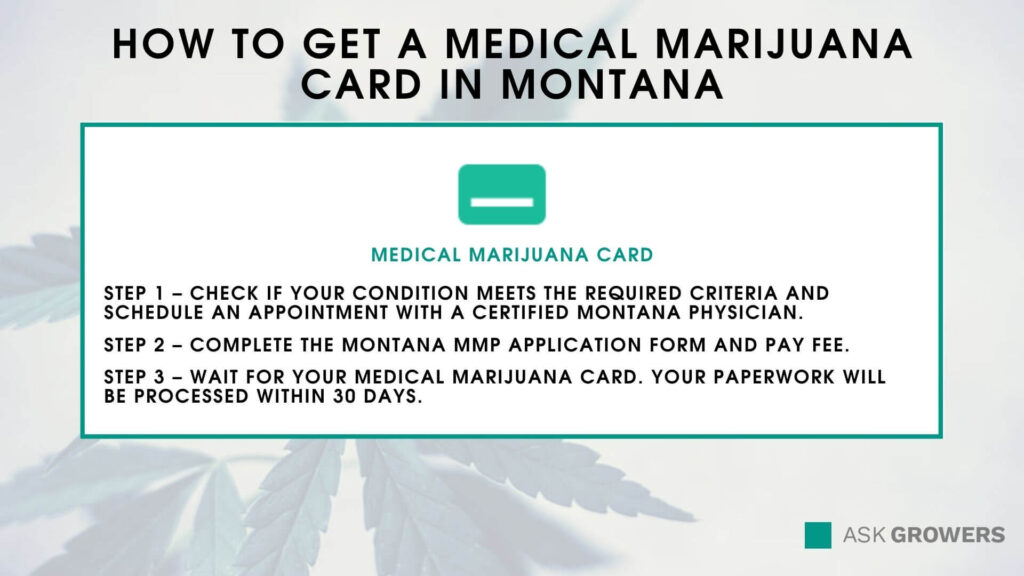
Diseases
Similar to other states, Montana MMJ patients have to get a written statement from a physician. To be approved by the program, they should be diagnosed with any of the qualifying conditions or diseases stated below:
- cancer;
- muscle spasms caused by multiple sclerosis;
- seizures by epilepsy;
- chronic pain;
- glaucoma;
- Crohn’s disease;
- cachexia;
- severe nausea/vomiting;
- painful peripheral neuropathy;
- HIV/AIDS;
- post-traumatic stress disorder.
With these medical conditions, individuals can qualify for a license. The admittance into hospice care is also considered a qualifying condition.
Patient qualifications
To meet MMJ qualifications, patients should be Montana residents 18 years of age and older. To prove residency, they should provide any photo ID. The passport, utility bills, bank statements are also acceptable.
Minors under 18 can also enroll in the program. Guardians or parents can apply for them by completing the application form. They have to get a recommendation signed by 2 physicians.
Patient registry process
Getting a medical marijuana card is easier now than it was in the past. To become registered in the state program, check if you have any of the qualifying diseases listed above.
Then, schedule an appointment with an MMJ physician and get certification that confirms your diagnosis. The physician should be licensed to have practice in the state. If you apply for medical hemp having chronic pain, provide relevant diagnostics, like MRI, X-ray, CTS, etc. You may consult a second doctor to acknowledge your chronic pain diagnosis.
Visit the official website of the Department of Health and Human Services, register, and fill in an application attaching the certification. Pay the registration fee, which is $75 for both renewals and new applications. Wait until the state reviews the request. Your medical card will be sent in the mail. It is valid for 1 year, but a doctor can specify a shorter time period.
Caregiver qualifications
Patients can designate a caregiver to assist them with the use of medical hemp. They have the right to determine up to 2 caregivers unless one of them is your family member. Caregivers must be Montana residents of 21 years old. They should be registered as providers as well. The same paperwork with an application fill-out is required.
Transporting Marijuana in Montana
Registered patients can transport medical cannabis in a vehicle if it is not accessed by a driver or other passengers. It should be stored in a locked box and kept in the back of a car or in the trunk. Montana police take pot transit seriously, and transportation of an opened container is considered a crime. It is better to reduce the number of times when you transport the product, for example, driving home from a dispensary.
The cannabis laws forbid drivers from operating a car/boating/flying an aircraft under the influence of weed as well as smoking inside a vehicle. This substance hurts driving skills, slows concentration and reaction time. It is very dangerous and can increase the risk of getting into a car accident.
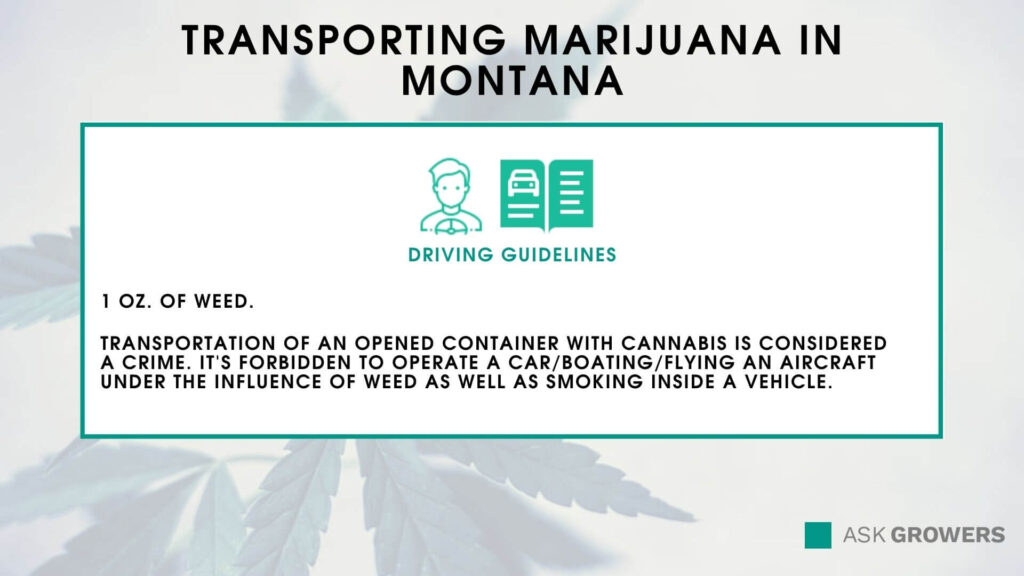
Exporting Marijuana
The state lines are governed on a federal level, and cannabis is forbidden on federal lands. While crossing the state borders with the hash you’ll be breaking the law. It is considered a federal offense. If you have leftovers, you may return cannabis to a dispensary or dispose of it.
Growing Marijuana
While applying for an MMJ card, patients can designate or cannot designate a weed provider. If they indicate a provider/dispensary, they are not allowed to grow cannabis. If they don’t name a provider, they can grow marijuana at home and have 4 mature plants and 4 seedlings (or as determined by the department).
If 2 or more medical cardholders share the same apartment and have no designated provider, they can cultivate not more than 8 plants and 8 seedlings. Note that growing hemp is allowed for patients 21 and older.
If MMJ patients live too far from a pharmacy, it is better to not designate a provider and grow hemp yourself. In this case, you should declare this location.
Cannabis cultivation takes place in a private house within an enclosed area and away from a public place. If the house is rented, you should get written permission from the owner.
Individuals without medical registration were not allowed to cultivate cannabis, but new hemp laws have brought new game rules. Adults of 21 and older can grow legal weed in their residences for personal use (not more than 4 plants and 4 seedlings).
Read Also: Features Of Growing Marijuana From Seed: Secrets And Recommendations
Licensing for Growers, Manufacturers, Processors, Retailers, Etc.
In 2001, Montana categorized cannabis as an agricultural crop if it contained less than 0.3% THC and legalized its cultivation for industrial purposes. The state worked out specific laws and licensing procedures for farmers to grow weed commercially. The law was symbolic and contained a request to the federal government. Only in 2018, the law was approved on the federal level. In 2020, the U.S. Department of Agriculture approved the Montana commercial hemp program.
After Montana marijuana legalization, the state Department of Revenue will regulate and license the sale, cultivation, and transportation of hemp, and inspect premises where cannabis is sold and grown. Soon, the bureau will provide further information on the rulemaking and licensing of Montana cannabis.
Sources
https://www.mass.gov/info-details/marijuana-in-massachusetts-whats-legal
https://wikipedia.org/wiki/Cannabis_in_Montana
https://www.medicalmarijuanainc.com/montana-marijuana-laws/
https://www.mpp.org/states/montana/
https://norml.org/laws/montana-penalties-2/
https://mtrevenue.gov/taxes/miscellaneous-taxes-and-fees/medical-marijuana-provider-tax/
https://www.marijuanadoctors.com/medical-marijuana/mt/qualification/

 Guides
Guides

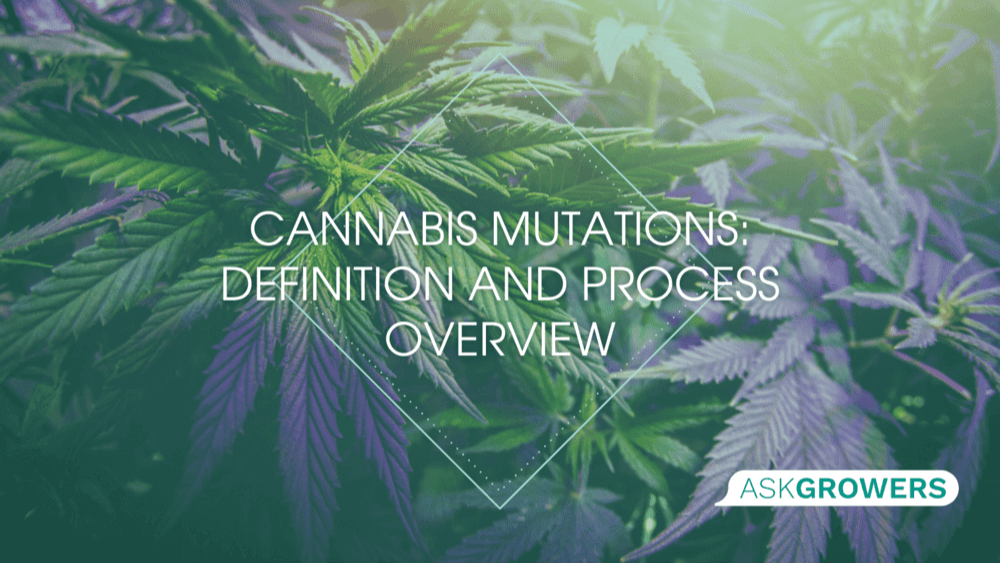
.png)
.png)
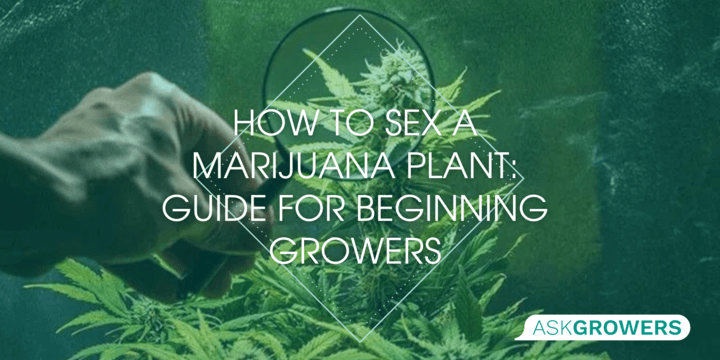
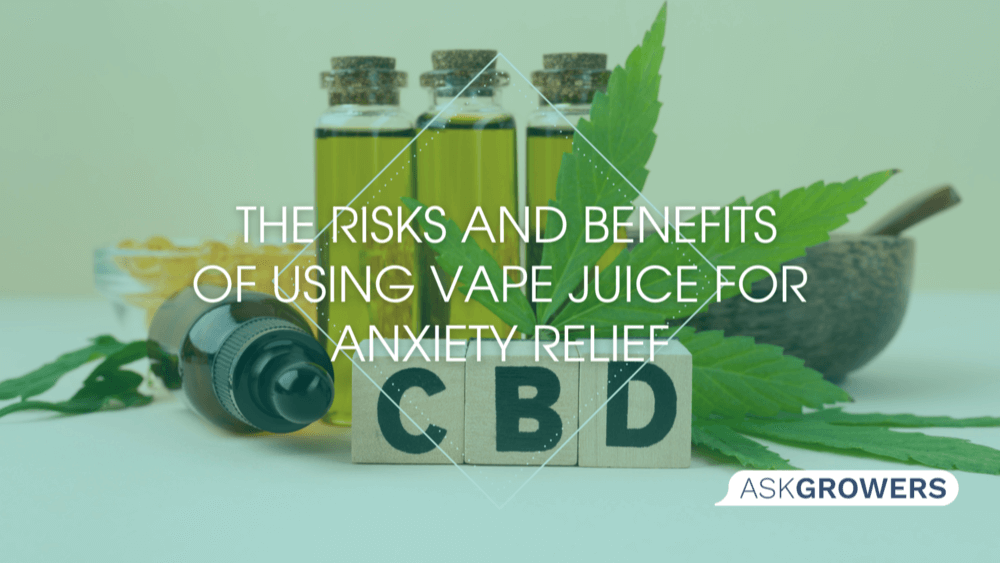

 (1).png)
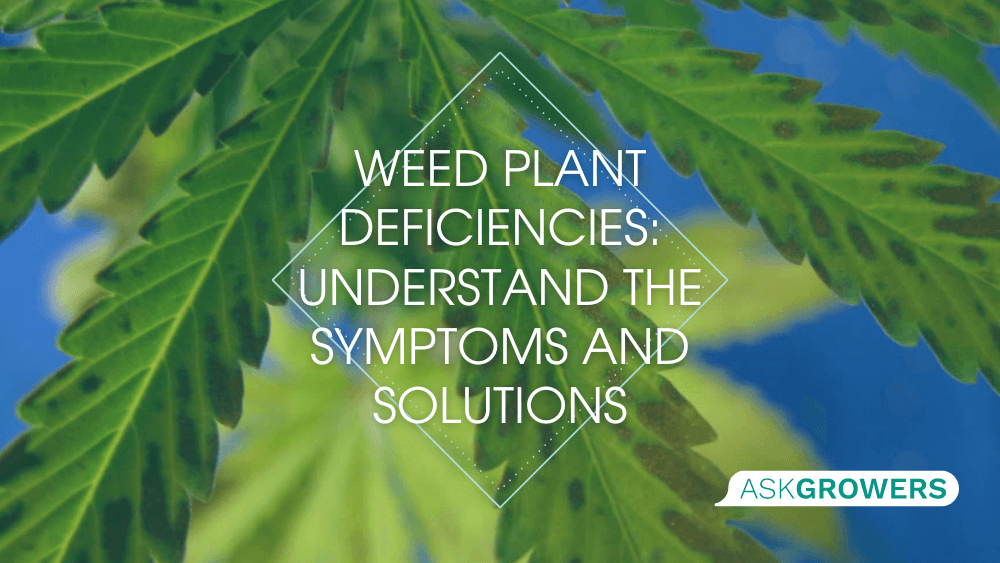
.jpg)

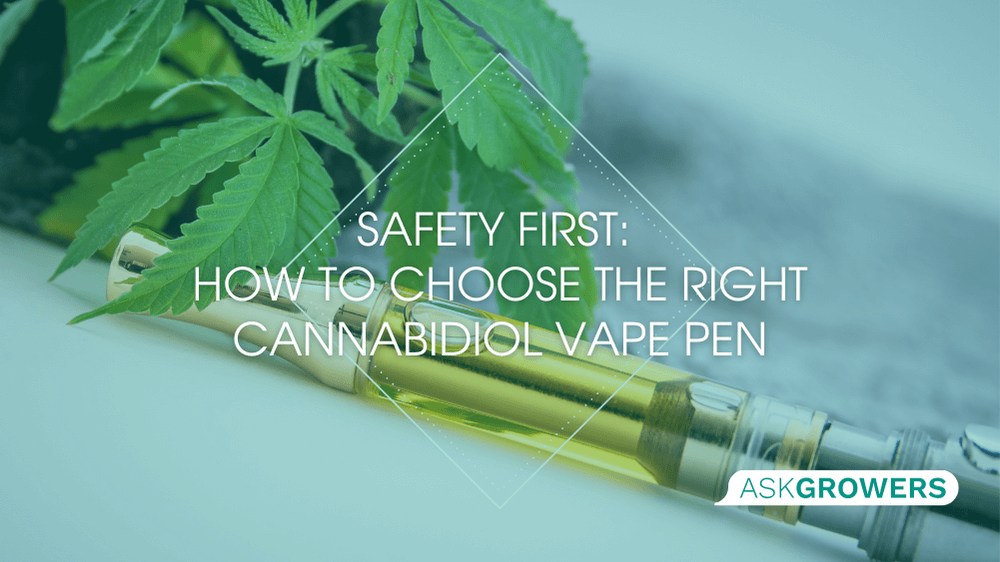
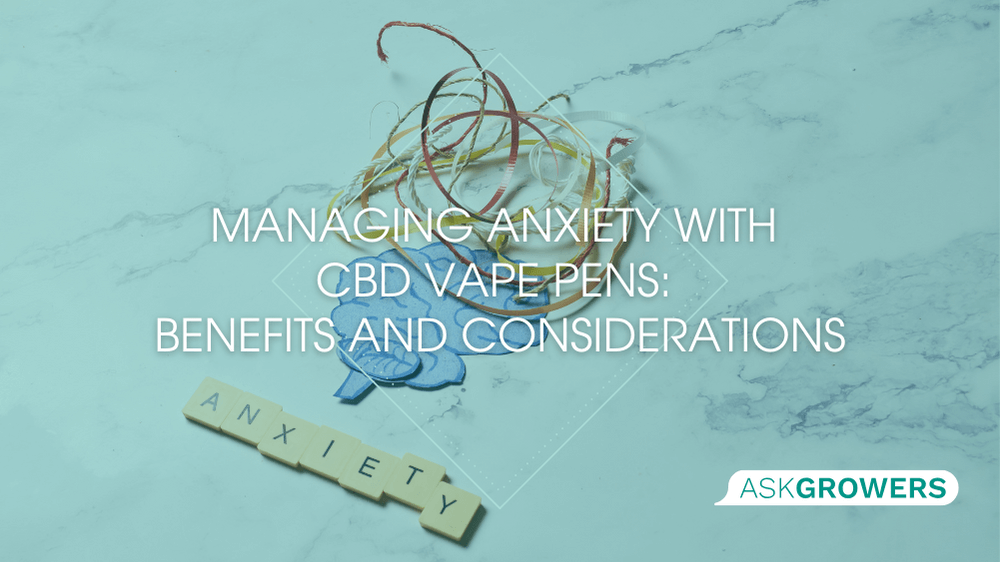
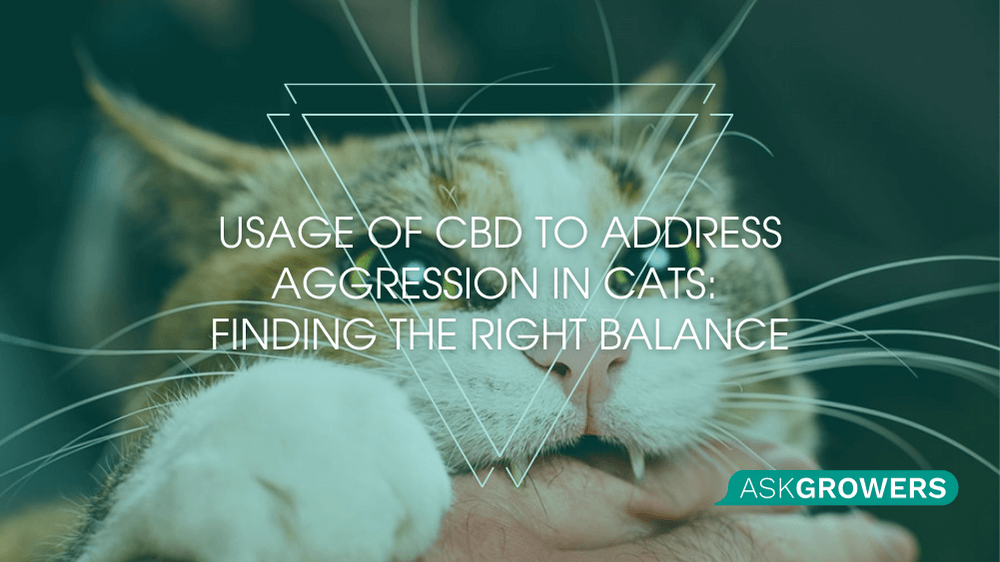
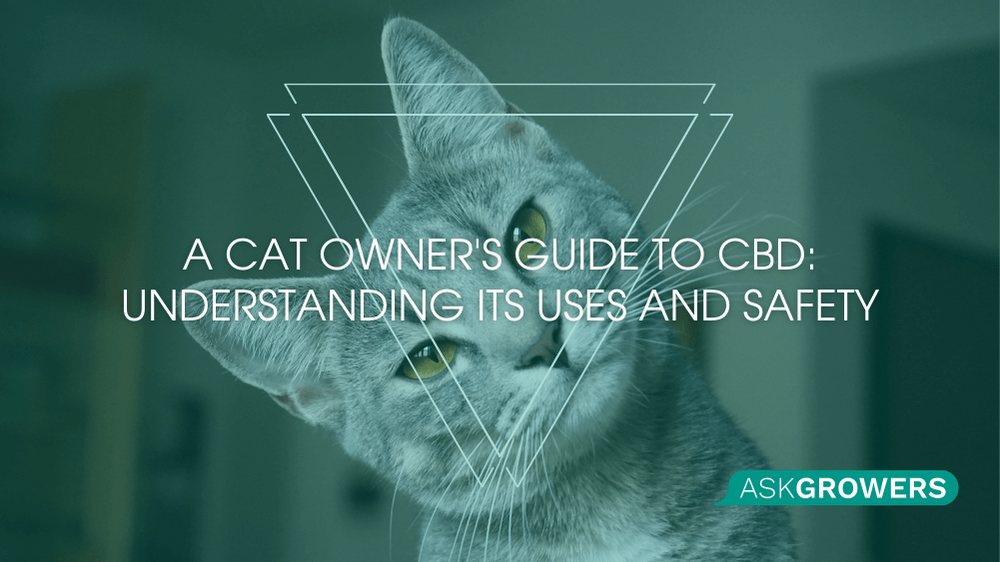
Be the first and share your opinion
Write a Review